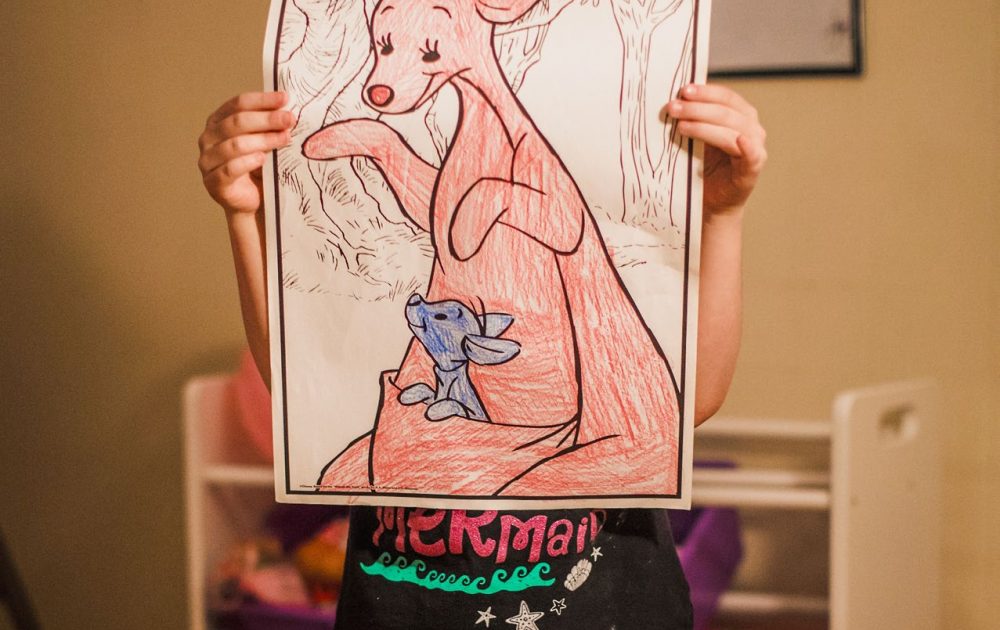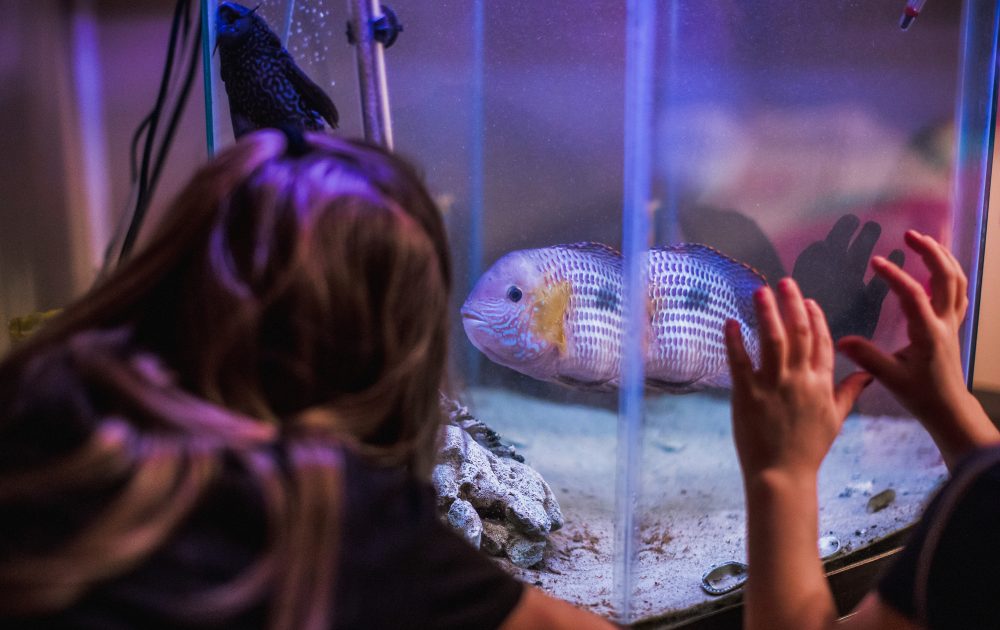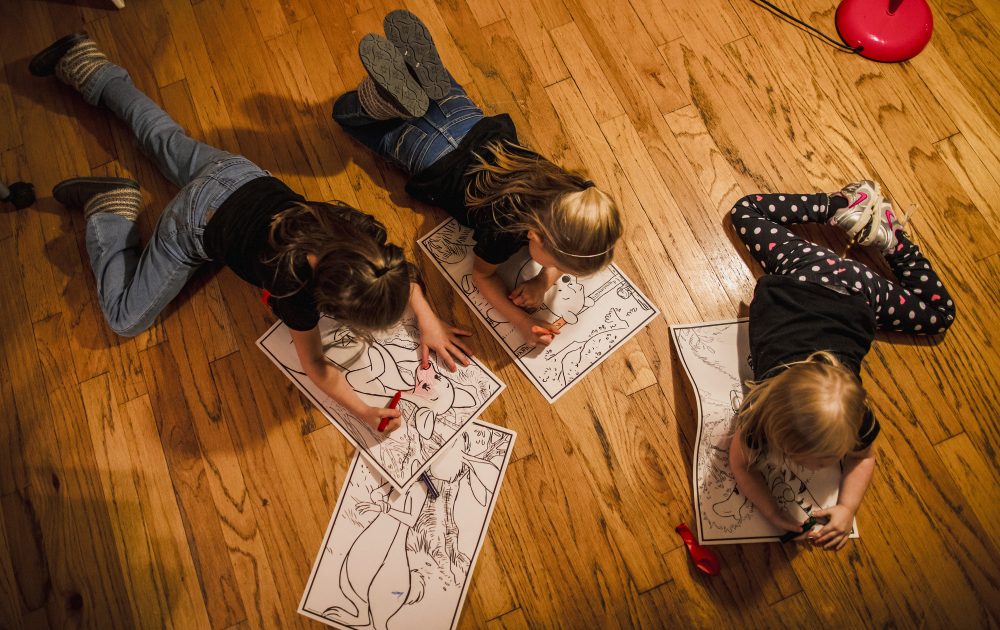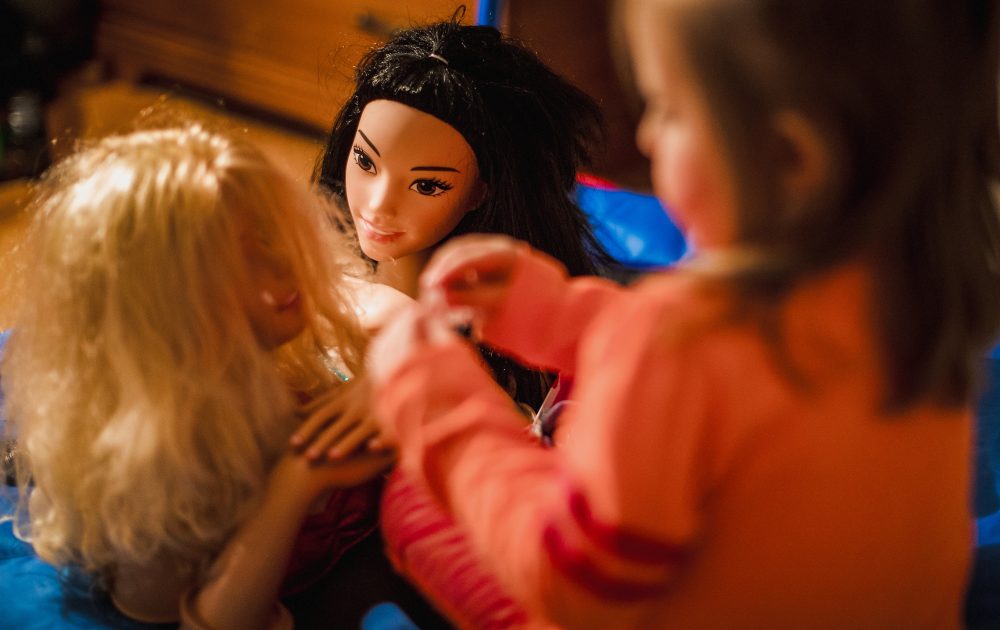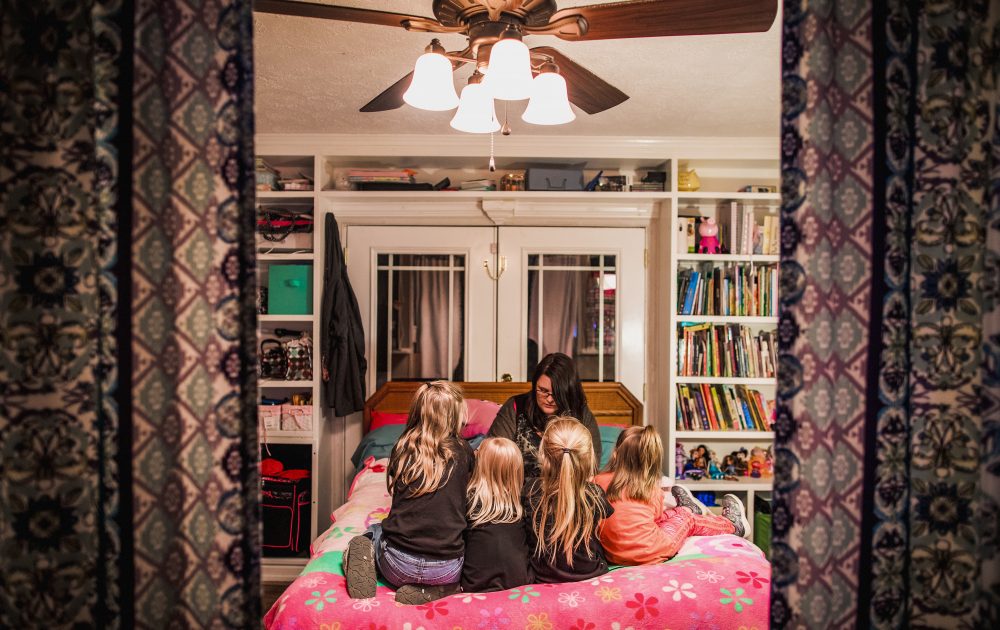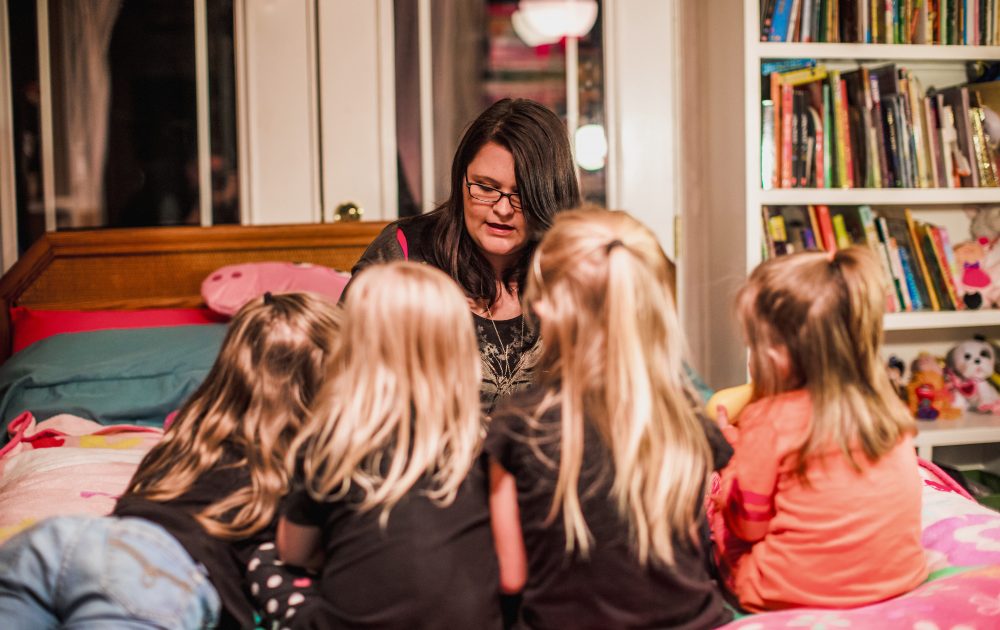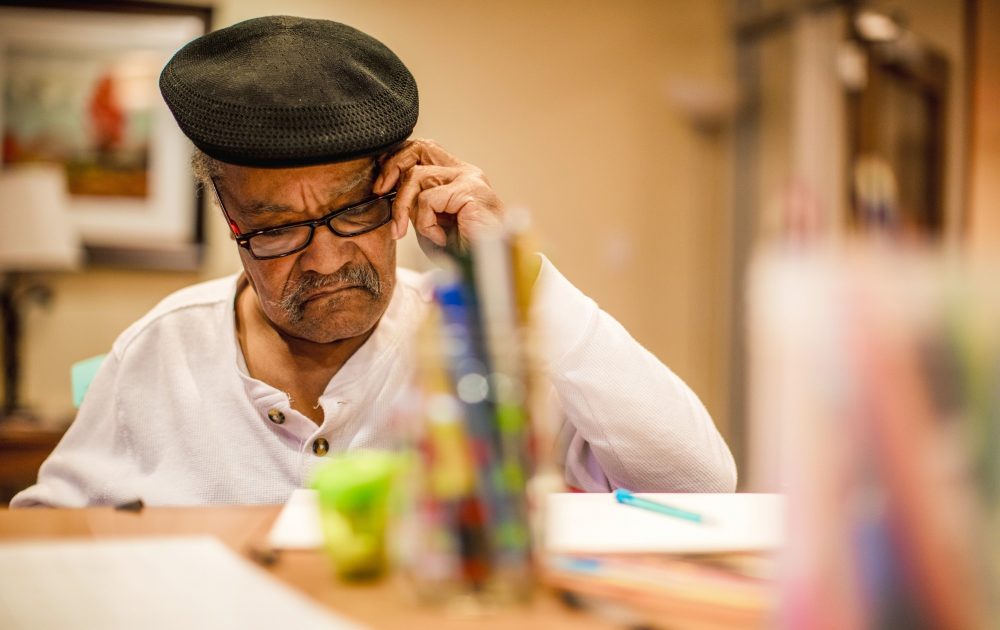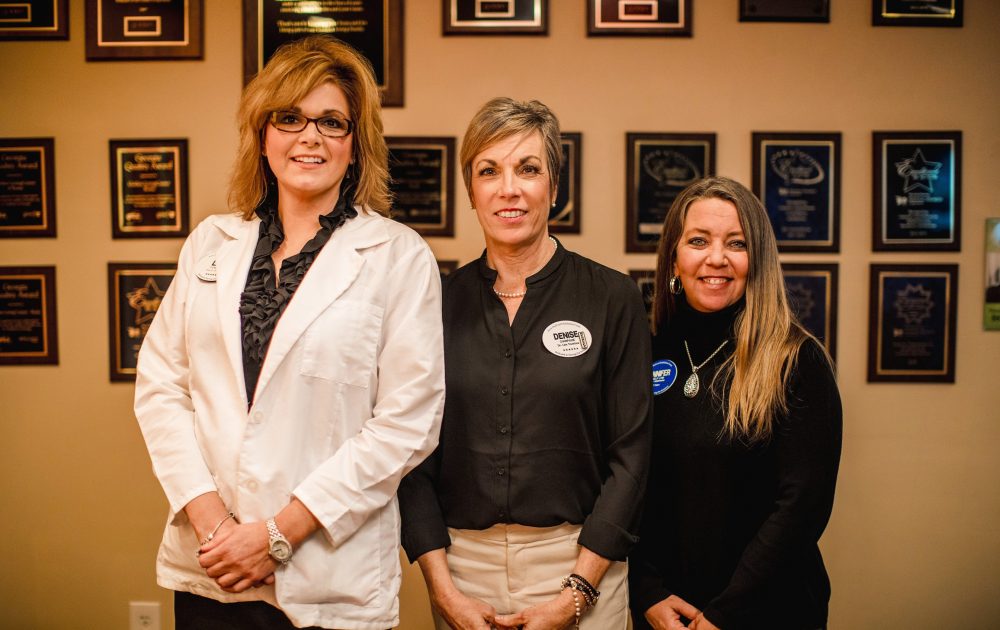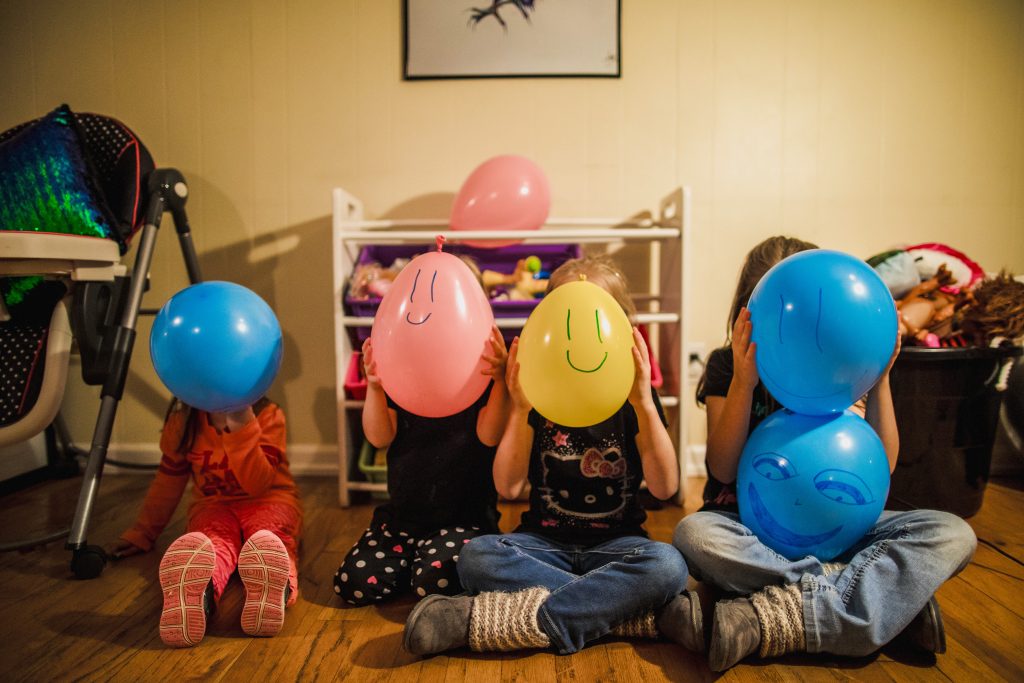
Photos by Cameron Flaisch
Colorful cityscapes of oversized Legos cast playful shadows on the swirls and scribbles of a jumbo dry erase board, and beneath the kaleidoscopic peak of Monopoly-like games, five tiny faces are ablush with bliss. In this particular house, energy is constant, sharing is inescapable, and the door is always open; metaphorically of course. Since February of 2015, Rachel Puryear and her husband Kevin have opened their home to, at least, 37 children in need. The minute they became foster parents, Rachel said, they never looked back.
“About 9:30 p.m.,” she recalls the night she took in her first foster children, “I got a phone call asking me if I could take some siblings; of course, I said yes. We got them about 11:30 p.m. on Friday the 13th and the case worker left a little after midnight on Valentine’s Day.”
Rachel says the timing was completely symbolic, “Friday the thirteenth and then Valentine’s Day…all the downfalls and all the love, all mixed up in one. For me, the timing was just amazing.”
Director for Floyd County Division of Family and Children Services (DFCS), Lindsey Jacobs Howerton, says that parents like Rachel are absolutely imperative to the foster care system. “She’s the reason that this group (of children) has been able to return to the Floyd County community,” Howerton explains. “She’s actually helped work with the biological parent directly, as well; so few of our families are able to do that. She’s a very special kind of person.”
Rachel’s motivation to foster was inspired by the love and selfless action of a lady she once called Mom; someone who embraced her in an influential time in her life. “She was structure,” Rachel recalls. “She was nonjudgmental, she loved without boundaries. There were never any strings attached and no matter what you did, she loved you…and she let you know she loved you. It was that unconditional love…” An unconditional love that Rachel has passed on to, not only her two grown children, but to 37 others that needed her.
According to gacasa.org, 19,466 children came through the foster care system for Georgia’s fiscal year 2016, and on any given day, there are 12,700 children within the system. For Floyd County, itself, numbers have seemed a bit more promising within the last several years. “This is actually the first time, since 2009, that we’ve seen a significant decline in our foster care population,” Howerton explains. “We are down to 376 children in foster care; it’s pretty significant for us because, at one point, within the last two years, our high was 443.”
The majority of Rachel’s foster children have been emergency placements; children that need-ed somewhere to go between being removed from their homes and awaiting a court’s decision to either return home or enter into care. She says that sometimes the call from DFCS may come at 2:00 a.m.; she has never turned down a child in Floyd County.
“We hover around 30 to 31% of our children being placed locally,” Howerton explains. She says that this lower percentage of local placements continues to be a struggle because it affects everything from visitation with birth parents, to pulling the children away from all of their familiar comforts. “That can actually lengthen the time that it takes for a parent to reunify with their child,” Howerton continues. “So, more foster homes and more children placed locally can actually improve the likelihood of reunification and decrease the amount of time it takes to get there.”
Echoed sentiments from various agencies, foster care professionals and even Floyd County Juvenile Court Judge, Greg Price, say that one of the most pressing issues associated with the local foster care system is a great need for more Floyd County foster families. As Howerton mentioned, placing a child out of county has many setbacks. Judge Price affirms that children have had to be placed as far away as Brunswick, Ga. “That’s traumatic,” he asserts. “Number one, it’s traumatic to remove them from their families, no matter how bad the families may be…kids love their parents. It’s hard to provide services to a child for your county when they’re across the state. It’s hard to arrange for visitation that costs money.”
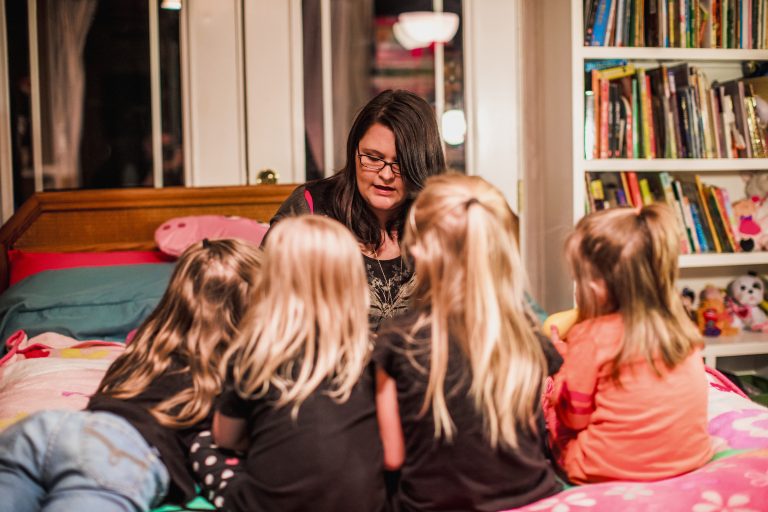
There are many placing agencies that strive to address that very issue by actively recruit-ing foster families for Region 3 (Floyd, Polk, Paulding, Bartow, Haralson and Douglas), a region that is known to have the most children living in the foster care system but the least amount of foster homes. Murphy-Harpst Children’s Center (located in Polk County) offers residential and specialized foster care (SFC) services for children removed from parental custody. Director of SFC, Arleen Wallace has been with Murphy-Harpst for 11 years and one of her largest focuses is matching a child to a suitable family. “There are so many kids with such tremendous potential. If we could only connect them with the right adults. I never do ‘head in a bed,’ I find it offensive. I would rather have a foster home without a child in it than to place a child with the wrong family.” Wallace expresses her respect for foster families as a tremendous resource, asserting that the system can’t afford a family to become exhausted and withdraw the willingness to foster. Murphy-Harpst currently supervises 27 homes throughout the region and Wallace says it’s just not enough, “…if I could just have 50 more.”
Lutheran Services of Georgia (LSGA) joins agencies like Murphy-Harpst in the mission to offer services that enhance the stability, well-ness and safety of children and families. While LSGA’s services extend to refugees, disability services, and disaster relief, a large portion of their model covers adoption and foster care. The statewide organization currently supervises 93 foster homes throughout Georgia. The Rome office, managed by Micah Bennett Johnson, supervises 21 of those homes, three of which are in Floyd County specifically. Both Johnson and Jane Cavaness, the Supervisor for Specialized Foster Care for LSGA Rome, agree and understand that becoming a foster parent is no easy decision; it’s an unknown that can seem a bit intimidating.
“Nobody would put someone in a job position without training,” Johnson says. “…and this is work.” No matter the agency a prospective foster family should partner with, training and support are built into the model. As part of foster preparation, LSGA requires a 24-hour pre-service training for new foster parents, called Impact that explores all the challenges a foster family may face. “It’s not lost on us, what these kids experience,” Johnson says. “And it’s certainly not lost on us what the foster parents experience.”
Cavaness brings, to the LSGA table, her own foster parent experience, and remains in awe of the capacity of people to grow and change. “Some of these kids have been through horrible trauma, and they get up and they get out of bed every morning and push forward in their lives and look for love and look for a home.” She adds, “It’s a testimony, to me, of the resiliency of the human spirit.”
Johnson says, that for her, this work has been nothing short of eye-opening, “Not only do these kids need help, but some of these parents really do, too. There are opportunities for the whole family to receive services so that they can heal and be a family again, that’s the ultimate goal.”
There is certainly no lack of effort or com-passion in the hands or hearts of the Rome community to ease the exigency endured by children and parents throughout the foster care process. In fact, Judge Price conveys much positivity when he speaks of the “massive ground swell” of knowledge and motivation that he’s witnessed surrounding this issue. One monolithic wave being that of Restoration Rome; an in-the-works resource hub for all things foster care, adoption, support and advocacy. Fueled by the efforts of Global Impact International, Jeff and Mary Margaret Mauer, and countless agencies and individuals in solidarity, Restoration Rome has repurposed the former Southeast Elementary School building (1400 Crane Street.), with partnerships and provisions that include DFCS, various placing agencies, onsite medical assessment, substance abuse/mental health counseling, and a resource closet (food, clothes etc.), just to name a few.
“The kids can come here and have a child friendly area,” Mary Margaret explains, “a care-giver who meets them at the door who stays with them through that process of getting the medical assessment, going and starting to talk about that psychological piece and assessing any developmental needs; all of those pieces. Just restoring a bit of control.”
Jeff emphasizes the level of convenience and support, for all involved, that comes from all of these services being under one roof, “Instead of referring them somewhere and hoping they go, we can walk them right down the hall. There’s a lot to be said about having everybody on site.” Although Restoration Rome is already hosting parenting classes, after school programs and meetings, Jeff and Mary Margaret have set their sights on a soft opening for the larger pieces of the center by the start of summer.
Sometimes the need is simply extra support; someone to aid in the necessary urgency for placement and permanency. Floyd County Court Appointed Special Advocates (CASA) are those very people. CASAs are trained and supervised volunteers who speak on behalf of children involved in the juvenile court system for foster care. Once they undergo a criminal background check, fingerprinting, 40 hours of training and a swearing in by the juvenile court judge, they take a case and begin gathering information. Advocacy for a CASA involves communicating with the child about their situation, maintaining contact with individuals and professionals involved in the child’s life, preparing written reports for court hearings and keeping the court abreast of any changes in the child’s situation.
“These children that are in the system,” ex-plains Sue Lagermann, director of Floyd County CASA, “the majority of them, I’d say it’s at least two years that they go through so many different placements, and so many different caseworkers, and they go from school to school.” Her voice softens as she adds that sometimes a CASA is the one constant in the child’s life; a consistent source of support and comfort.
“One of the things they say at DFCS,” Rachel says, “is, ‘It takes a village.’ Well, Floyd County families…this is a village. We should be looking out for one another, and that’s all there is to it.”
Mary Margaret points out that for every child in care, there should really be three foster home options. “I think people second guess themselves,” Rachel addresses what may lie in the way of more families fostering. “They think, ‘I don’t have the time, I don’t have the finances, my heart would break, I couldn’t take on somebody else’s children’…Yes, you could, you absolutely could.”
Any individuals and families that have considered (or would just like more information on) fostering a child are encouraged to ask questions, attend information sessions, reach out to parents like Rachel through the Floyd County Foster Par-ent Association; whether the inquiry is received through DFCS directly, LSGA, Murphy-Harpst or Restoration Rome, the answers, the support and the training are available and eagerly await. Becoming a foster family is only one way to help children in care; adoption, donation (material or monetary), and Respite care (providing temporary care, to give foster parents a short beneficial break) are all options that assist tremendously.
“I’ve seen so many people volunteer to help provide childcare for families in need, to help provide those one-time clothing donations or diaper donations,” Howerton explains. “It eases the everyday struggles that families have that, if not resolved or supported, can lead to children being maltreated…and it’s just that simple.”
Although she remains steadfast in her deci-sion to be a foster parent “as long as she can,” Rachel says it hasn’t necessarily been easy. Given her background working with children and owning her own home daycare, Rachel says that only prepared her so much; it was the emotional aspect of fostering children that she hadn’t been able to fully prepare herself for.
“Some of these kids come in with a lot of hurts, not just physical, but also emotional.” Rachel says that, in her experience, an emotional response can never be predicted, sometimes very subtle things can extract a negative emotion for a foster child, like the sound of a TV show or the smell of a certain perfume.
For example, she recalls, “We were in a store one time, and a cell phone went off. The child heard the ringtone and it triggered something inside that upset them, to the point that they ended up wetting themselves right in the middle of the store. You never know what will trigger a child.”
A foster parent, however, is never left to deal with these hardships alone. All of the aforementioned agencies offer support services to their foster families. “We have continued training and social opportunities within Lutheran Services for our Rome families to get to together,” Cavaness explains. “We’ve got foster parents who are newer and foster parents who’ve been around a while, so it’s good for them to talk.” Foster parents like Rachel also derive support from therapy and the Floyd County Foster Parent Association that meets monthly.
As Floyd County presses on in solidarity to strengthen family ties, and help foster children thrive, may the ground swell of compassion grow ever stronger. Like Rachel says, “You just take it one day at a time, sometimes one minute at a time.”
For more information on these agencies and how you can help, visit:
lsga.org
dfcs.dhs.georgia.gov/foster-care
floydcasa.org
murphyharpst.org

